Choose a magnifying glass with illumination for embroidery and needlework
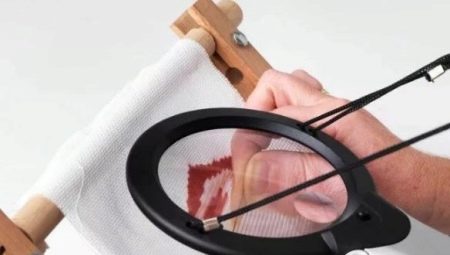
In the process of needlework or in any other delicate work, every housewife will need such an assistant as a magnifier with backlight. This device is necessary so that the operation is performed easily and efficiently and the eyes do not suffer. In this article, we will take a closer look at the features and types of this optical device.
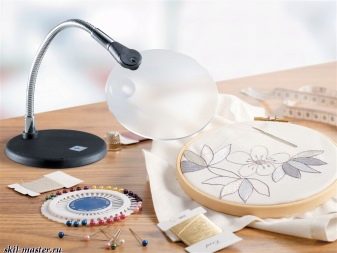
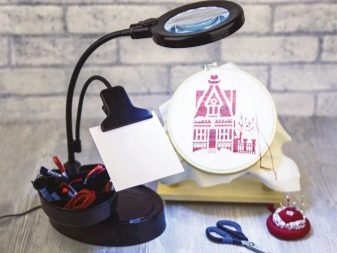
Characteristic
A magnifier is a special design that is necessary to examine small details that are barely visible to the naked eye.
A simple version of the device for embroidery consists of a single lens or a full-fledged mechanism, which includes a number of lenses with a small focal length, capable of increasing tens or hundreds of times.
A wide range of magnifying glasses of various sizes is currently on the market.. The bulk of these devices is the same as domed glass, rounded with a flat bottom. These items are widely used in the process of reading books, and for the study of tiny particles, and in needlework.
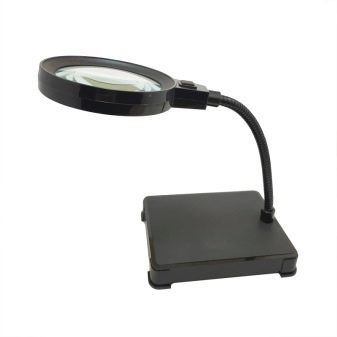
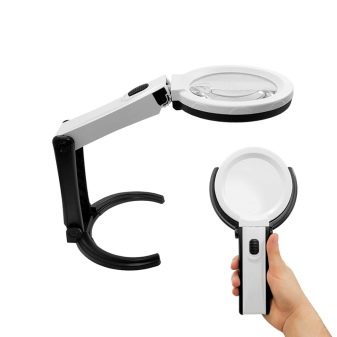
Types of loops for embroidery
To perform such a delicate operation as embroidery, it is impossible to do without a magnifying glass with backlight. There are different types of devices under consideration. Let's get acquainted with them in more detail.
Illuminated magnifier with head mount
A similar model is mounted on a rim of plastic, the diameter of which is easily adjustable. Then the device is put on the head like a baseball cap. Such a magnifier is called binocular. It consists of 3 lenses, two of which are in the shape of a rectangle, and the third is round monocular.
The lenses are made of acrylic polymer, and if necessary, they can be easily replaced with new ones.
Included is a removable lighting partwhich feeds from two AAA batteries. The backlight greatly facilitates the needlework process.
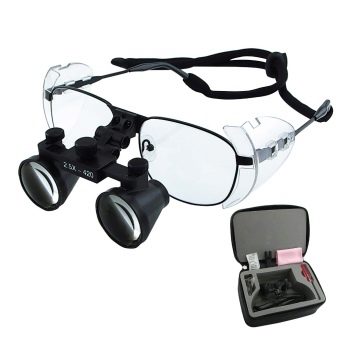
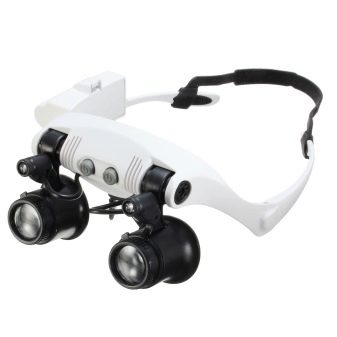
Such a design makes it possible to adjust the level of increase in the required item and allows you to:
- illuminate the subject of embroidery with the help of bulbs built into the model;
- it is convenient to fasten the device to the head with a belt for regulation;
- do needlework using corrective glasses;
- quickly remove lenses from the viewing area;
- prevent lateral illumination of the working area.
But such a device requires the following precautions when using:
- Do not leave the lens in direct sunlight.so as not to cause a fire;
- categorically you can’t look at the sun through a magnifier, to avoid eye damage;
- do not leave the accessory close to the source of fireso as not to deform the device.
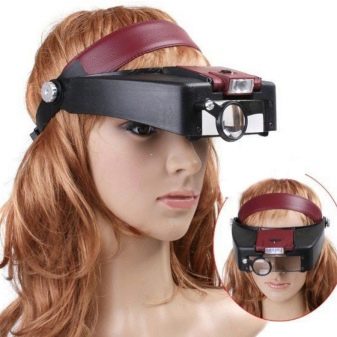
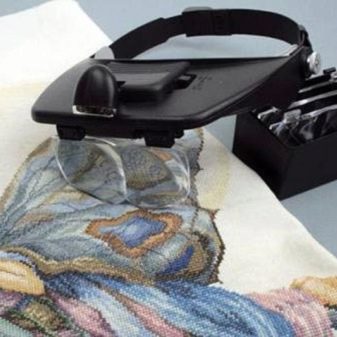
Illuminated tabletop magnifier for needlework
This design option is medium in size and is mounted on a stand. The main lens is 9 cm in diameter (a 2-fold increase), and the additional built-in lens is 2 cm in diameter (6 times increase). The base of the device is weighted with rubber pads for the stability of the magnifier. This model is equipped with 2 bright economical LEDs. Power comes from 3 batteries.
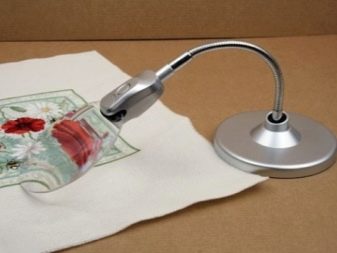
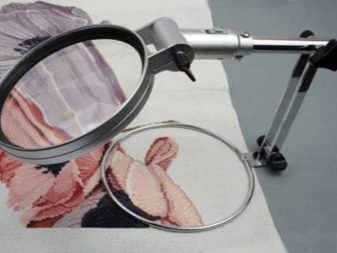
With fixture
This model has a built-in circular illumination, which forms a shadowless working area. The design has a convenient mount that allows you to fix it on any flat surface. To highlight the batteries are not needed, since the device is powered by an outlet.
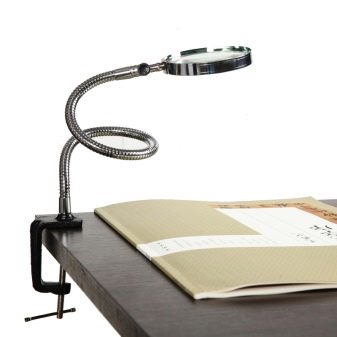

For embroidery with glasses attached
This type of device is attached to ordinary glasses and makes it possible to free your hands during the embroidery process. The magnifier has a glasses configuration.
It is attached on a clothespin over glasses.
If unnecessary, the device rises up and holds in this position until the moment when there is again a need for it.
This option is suitable for sewing and embroidery. Since not all types of magnifiers are equipped with backlights, it is possible to purchase a special lamp for these purposes.
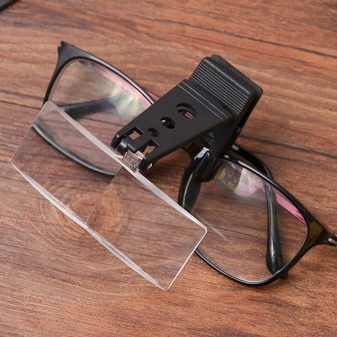
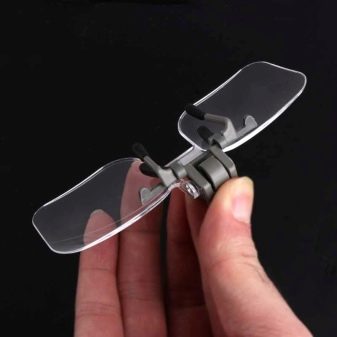
Type of lamps for needlework
Let's get acquainted in more detail with the types of lamps required to illuminate small products.
The design of each lamp consists of:
- basics;
- scattering element;
- a holding part to which the scattering element is fixed;
- circuit breaker.
In addition, the device may have additional elements that carry functional content, adjusting the level of height, angle of rotation or level of brightness of light.
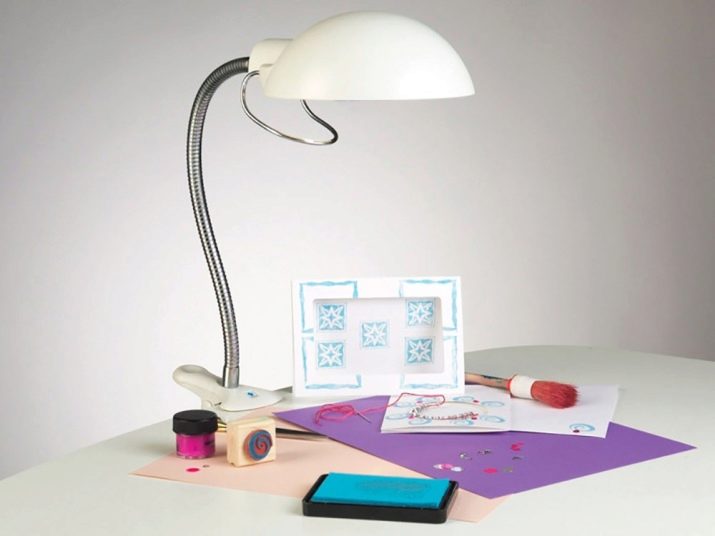
By type of basis, all lighting devices are divided into:
- traditional devices;
- clothespin designs;
- fixtures with a clamp.
Each of these options is ideal for the embroidery process.
A model with a flat base of a square, round or oval shape is a classic. A similar basis allows you to make the design stable and mobile.
The device on the clamp is fixed rigidly to the used plane with a screw lock, which allows you to give stability, eliminating the fall of the lamp.
The base of the construction on the clothespin is made as a clamp. This option is very compact and is fixed to the edge of the table surface. This type of mount is reliable and mobile.
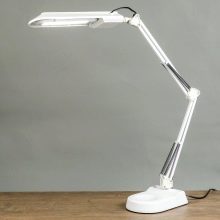
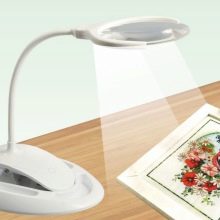
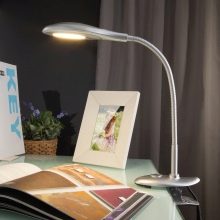
Table lamps differ in the type of holding part and are:
- elastic;
- folding;
- stationary.
Stationary device types are a lamp on a held part in the form of a leg, with a vertical arrangement.
The elastic version has a flexible and plastic holding element. This design is easy to rotate at different angles and change not only the tilt, but also the height of the lighting.
Folding devices have holding parts assembled from several parts. Here, you can also change their position due to folding and folding links of the holder.
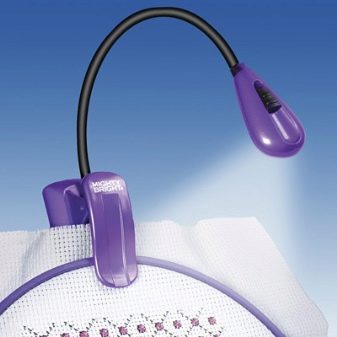
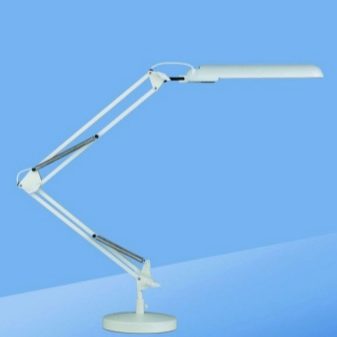
Lamps for embroidery differ in the type of switches, which are:
- classic
- sensory.
The classic version has a simple push button switch.
The touch type is equipped with sensors that respond to an ordinary touch to turn on.
What to consider when choosing?
Next, we consider the main parameters when choosing a design with backlight for embroidery and needlework.
- Need to know the distance between the lens and the subject. So, for the embroidery and sewing process, the optimal version of the model, which has a large multiplicity, but a small working gap. It is necessary to take into account the overview and the number of details considered. A serious aspect is the depth of field.
- Additionally should pay attention to the focal length and lens manufacturing quality.
- Backlit devices needed equip with a damage protection system.
- The backlit design must be stable on the surface of the table or convenient location on the arm.
- It is desirable to have a backlight with an independent power source.

Application
Handicraft magnifiers are also used in other areas.
- In cosmetology. In work with manicure, pedicure, tattoo, a product with an increase of 3 diopters is suitable. To perform injections and in working with very small objects, a device with 5 diopters will correspond.
- For reading Rectangular or square lenses with 3 diopters are suitable.
- In embroidery. Here it is better to choose a product for 3 diopters.
- In jewelry work. A magnifier with a maximum magnification of 8 and 12 diopters is required.
Given the scope and having decided on the appropriate type of device, it will be easy to acquire such an indispensable assistant to perform your favorite work.
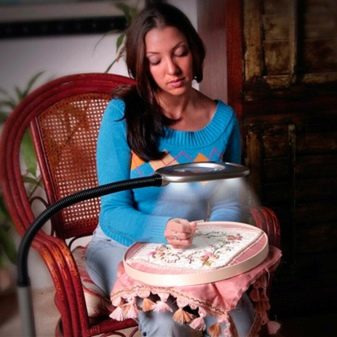
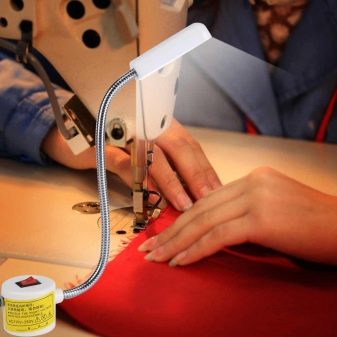
An overview of the magnifying lamp for embroidery, see the video.









